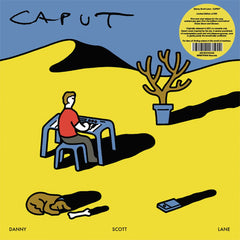クイックビュー
{"id":7771078394106,"title":"Midori Takada \/\/ You Who Are Leaving To Nirvana LP \/ CD","handle":"midori-takada-you-who-are-leaving-to-nirvana-lp-cd","description":"\u003cp\u003e日本のパーカッショニスト高田みどりが、2022年6月にWRWTFWW Recordsからリリースしたアルバムです。\u003c\/p\u003e\n\u003cp\u003e高野山真言宗の\u003cspan data-mce-fragment=\"1\"\u003e僧侶たちによる般若心経や御詠歌を彼女自身が手掛け、それらを瞑想的な打楽器とミックスしたディープリスニング系ポストニューエイジ・アンビエント7曲を収録。レコードは180g重量盤です。\u003c\/span\u003e\u003c\/p\u003e\n\u003ciframe style=\"border: 0; width: 100%; height: 120px;\" src=\"https:\/\/bandcamp.com\/EmbeddedPlayer\/album=646137408\/size=large\/bgcol=ffffff\/linkcol=0687f5\/tracklist=false\/artwork=small\/transparent=true\/\" seamless=\"\"\u003e\u003c\/iframe\u003e\n\u003cp\u003eレーベルその他作品は\u003ca href=\"https:\/\/tobirarecords.com\/collections\/wrwtfww\"\u003eこちら\u003c\/a\u003e \/\/\/ Click \u003ca href=\"https:\/\/tobirarecords.com\/collections\/wrwtfww\"\u003ehere\u003c\/a\u003e to see more\u003cspan\u003e \u003c\/span\u003e\u003cmeta charset=\"utf-8\"\u003eWRWTFWW Records releases available at Tobira.\u003c\/p\u003e\n\u003cp\u003e---------------------------------\u003c\/p\u003e\n\u003cp\u003e12\" vinyl \u003cmeta charset=\"utf-8\"\u003e\u003cspan data-mce-fragment=\"1\"\u003ehoused in a 350gsm sleeve, with OBI, and liner notes \/ CD in digipak. \u003c\/span\u003e\u003c\/p\u003e\n\u003cp\u003e\u003cmeta charset=\"utf-8\"\u003e\u003cspan\u003eWRWTFWW Records:\u003c\/span\u003e\u003c\/p\u003e\n\u003cp\u003e\"\u003cmeta charset=\"utf-8\"\u003e\u003cem\u003eWRWTFWW Records and MEG Museum (Geneva) are ecstatic to announce a new full length album by celebrated Japanese percussionist Midori Takada (Through The Looking Glass), in collaboration with Buddhist monks belonging to the Samgha group of the Shingon school of Koya-san, led by Reverend Syuukoh Ikawa. You Who Are Leaving To Nirvana is available on half speed mastered vinyl LP, housed in a 350gsm sleeve, with OBI, and liner notes, as well as on digipack CD.\u003c\/em\u003e\u003cbr data-mce-fragment=\"1\"\u003e\u003cbr data-mce-fragment=\"1\"\u003e\u003cem\u003eRecorded at The Premises Studio (London) and in Tokyo in 2019,You Who are Leaving to Nirvana is a majestic work combining a suite of six Buddhist liturgical chants and a musical creation by Midori Takada. The Buddhist chants come from three types of repertoires: shomyo (\"Teisan\", \"Unga-Bai\", \"Sange\", \"Taiyo\"), but also goeika (\"Kannon-Daiji\") and mantra (\"Hannya-Singyo\").\u003c\/em\u003e\u003cbr data-mce-fragment=\"1\"\u003e\u003cbr data-mce-fragment=\"1\"\u003e\u003cem\u003eAfter supervising the recording of the Buddhist chants, Midori Takada added her own compositions, with subtle layers of percussion and the melodies of her beloved marimba, giving full life to the\u003cspan class=\"bcTruncateMore\" data-mce-fragment=\"1\"\u003e sacred texts.\u003cbr data-mce-fragment=\"1\"\u003e\u003cbr data-mce-fragment=\"1\"\u003eReverend Syuukoh Ikawa explains: \"Shomyo is a form of declamation of sacred esoteric texts, inherited over many generations. The power of words goes far beyond their mere pronunciation. I think there is something that words alone cannot really convey. If I recite prayers in a musical way, the feeling transmitted will be even stronger than if I say it normally, in everyday language. I think that the musicality of a work carries a hidden power that cannot be expressed in words alone. The setting of the music has an additional power for you and for those around you who listen to it. The words of a song are not just words set to music. They carry an additional hidden power that cannot be expressed in any other way. Listening to Midori Takada's musical performance, the words truly seem to come alive.\"\u003cbr data-mce-fragment=\"1\"\u003e\u003cbr data-mce-fragment=\"1\"\u003eOriginal recordings of the Buddhist chants are held in the International Archives of Folk Music (IAFM) at the MEG Museum in Geneva.\u003cbr data-mce-fragment=\"1\"\u003e\u003cbr data-mce-fragment=\"1\"\u003eThe album sleeve features an artwork by famed Japanese sculptor Katsura Funakoshi selected by Midori Takada.\"\u003c\/span\u003e\u003c\/em\u003e \u003c\/p\u003e\n\u003cp\u003eArtist : Midori Takada\u003c\/p\u003e\n\u003cp\u003eLabel : \u003cmeta charset=\"utf-8\"\u003e\u003cspan data-mce-fragment=\"1\"\u003eWRWTFWW Records\u003c\/span\u003e\u003c\/p\u003e","published_at":"2022-09-27T14:09:17+09:00","created_at":"2022-09-26T18:29:56+09:00","vendor":"Tobira Records","type":"","tags":["ambient","cd","lp","post newage","WRWTFWW Records"],"price":248000,"price_min":248000,"price_max":398000,"available":true,"price_varies":true,"compare_at_price":null,"compare_at_price_min":0,"compare_at_price_max":0,"compare_at_price_varies":false,"variants":[{"id":43436897140986,"title":"LP","option1":"LP","option2":null,"option3":null,"sku":"","requires_shipping":true,"taxable":true,"featured_image":null,"available":true,"name":"Midori Takada \/\/ You Who Are Leaving To Nirvana LP \/ CD - LP","public_title":"LP","options":["LP"],"price":398000,"weight":430,"compare_at_price":null,"inventory_management":"shopify","barcode":"","requires_selling_plan":false,"selling_plan_allocations":[]},{"id":43436897173754,"title":"CD","option1":"CD","option2":null,"option3":null,"sku":"","requires_shipping":true,"taxable":true,"featured_image":null,"available":true,"name":"Midori Takada \/\/ You Who Are Leaving To Nirvana LP \/ CD - CD","public_title":"CD","options":["CD"],"price":248000,"weight":90,"compare_at_price":null,"inventory_management":"shopify","barcode":"","requires_selling_plan":false,"selling_plan_allocations":[]}],"images":["\/\/tobirarecords.com\/cdn\/shop\/products\/wo1_7d62452b-af35-42e0-94e0-8f8acf13494d.jpg?v=1664184598","\/\/tobirarecords.com\/cdn\/shop\/products\/wo2_6a275d26-e006-4df3-bb6c-e5e3e1c0638b.jpg?v=1664184598"],"featured_image":"\/\/tobirarecords.com\/cdn\/shop\/products\/wo1_7d62452b-af35-42e0-94e0-8f8acf13494d.jpg?v=1664184598","options":["format"],"media":[{"alt":null,"id":30576451453178,"position":1,"preview_image":{"aspect_ratio":1.0,"height":700,"width":700,"src":"\/\/tobirarecords.com\/cdn\/shop\/products\/wo1_7d62452b-af35-42e0-94e0-8f8acf13494d.jpg?v=1664184598"},"aspect_ratio":1.0,"height":700,"media_type":"image","src":"\/\/tobirarecords.com\/cdn\/shop\/products\/wo1_7d62452b-af35-42e0-94e0-8f8acf13494d.jpg?v=1664184598","width":700},{"alt":null,"id":30576451485946,"position":2,"preview_image":{"aspect_ratio":1.0,"height":1200,"width":1200,"src":"\/\/tobirarecords.com\/cdn\/shop\/products\/wo2_6a275d26-e006-4df3-bb6c-e5e3e1c0638b.jpg?v=1664184598"},"aspect_ratio":1.0,"height":1200,"media_type":"image","src":"\/\/tobirarecords.com\/cdn\/shop\/products\/wo2_6a275d26-e006-4df3-bb6c-e5e3e1c0638b.jpg?v=1664184598","width":1200}],"requires_selling_plan":false,"selling_plan_groups":[],"content":"\u003cp\u003e日本のパーカッショニスト高田みどりが、2022年6月にWRWTFWW Recordsからリリースしたアルバムです。\u003c\/p\u003e\n\u003cp\u003e高野山真言宗の\u003cspan data-mce-fragment=\"1\"\u003e僧侶たちによる般若心経や御詠歌を彼女自身が手掛け、それらを瞑想的な打楽器とミックスしたディープリスニング系ポストニューエイジ・アンビエント7曲を収録。レコードは180g重量盤です。\u003c\/span\u003e\u003c\/p\u003e\n\u003ciframe style=\"border: 0; width: 100%; height: 120px;\" src=\"https:\/\/bandcamp.com\/EmbeddedPlayer\/album=646137408\/size=large\/bgcol=ffffff\/linkcol=0687f5\/tracklist=false\/artwork=small\/transparent=true\/\" seamless=\"\"\u003e\u003c\/iframe\u003e\n\u003cp\u003eレーベルその他作品は\u003ca href=\"https:\/\/tobirarecords.com\/collections\/wrwtfww\"\u003eこちら\u003c\/a\u003e \/\/\/ Click \u003ca href=\"https:\/\/tobirarecords.com\/collections\/wrwtfww\"\u003ehere\u003c\/a\u003e to see more\u003cspan\u003e \u003c\/span\u003e\u003cmeta charset=\"utf-8\"\u003eWRWTFWW Records releases available at Tobira.\u003c\/p\u003e\n\u003cp\u003e---------------------------------\u003c\/p\u003e\n\u003cp\u003e12\" vinyl \u003cmeta charset=\"utf-8\"\u003e\u003cspan data-mce-fragment=\"1\"\u003ehoused in a 350gsm sleeve, with OBI, and liner notes \/ CD in digipak. \u003c\/span\u003e\u003c\/p\u003e\n\u003cp\u003e\u003cmeta charset=\"utf-8\"\u003e\u003cspan\u003eWRWTFWW Records:\u003c\/span\u003e\u003c\/p\u003e\n\u003cp\u003e\"\u003cmeta charset=\"utf-8\"\u003e\u003cem\u003eWRWTFWW Records and MEG Museum (Geneva) are ecstatic to announce a new full length album by celebrated Japanese percussionist Midori Takada (Through The Looking Glass), in collaboration with Buddhist monks belonging to the Samgha group of the Shingon school of Koya-san, led by Reverend Syuukoh Ikawa. You Who Are Leaving To Nirvana is available on half speed mastered vinyl LP, housed in a 350gsm sleeve, with OBI, and liner notes, as well as on digipack CD.\u003c\/em\u003e\u003cbr data-mce-fragment=\"1\"\u003e\u003cbr data-mce-fragment=\"1\"\u003e\u003cem\u003eRecorded at The Premises Studio (London) and in Tokyo in 2019,You Who are Leaving to Nirvana is a majestic work combining a suite of six Buddhist liturgical chants and a musical creation by Midori Takada. The Buddhist chants come from three types of repertoires: shomyo (\"Teisan\", \"Unga-Bai\", \"Sange\", \"Taiyo\"), but also goeika (\"Kannon-Daiji\") and mantra (\"Hannya-Singyo\").\u003c\/em\u003e\u003cbr data-mce-fragment=\"1\"\u003e\u003cbr data-mce-fragment=\"1\"\u003e\u003cem\u003eAfter supervising the recording of the Buddhist chants, Midori Takada added her own compositions, with subtle layers of percussion and the melodies of her beloved marimba, giving full life to the\u003cspan class=\"bcTruncateMore\" data-mce-fragment=\"1\"\u003e sacred texts.\u003cbr data-mce-fragment=\"1\"\u003e\u003cbr data-mce-fragment=\"1\"\u003eReverend Syuukoh Ikawa explains: \"Shomyo is a form of declamation of sacred esoteric texts, inherited over many generations. The power of words goes far beyond their mere pronunciation. I think there is something that words alone cannot really convey. If I recite prayers in a musical way, the feeling transmitted will be even stronger than if I say it normally, in everyday language. I think that the musicality of a work carries a hidden power that cannot be expressed in words alone. The setting of the music has an additional power for you and for those around you who listen to it. The words of a song are not just words set to music. They carry an additional hidden power that cannot be expressed in any other way. Listening to Midori Takada's musical performance, the words truly seem to come alive.\"\u003cbr data-mce-fragment=\"1\"\u003e\u003cbr data-mce-fragment=\"1\"\u003eOriginal recordings of the Buddhist chants are held in the International Archives of Folk Music (IAFM) at the MEG Museum in Geneva.\u003cbr data-mce-fragment=\"1\"\u003e\u003cbr data-mce-fragment=\"1\"\u003eThe album sleeve features an artwork by famed Japanese sculptor Katsura Funakoshi selected by Midori Takada.\"\u003c\/span\u003e\u003c\/em\u003e \u003c\/p\u003e\n\u003cp\u003eArtist : Midori Takada\u003c\/p\u003e\n\u003cp\u003eLabel : \u003cmeta charset=\"utf-8\"\u003e\u003cspan data-mce-fragment=\"1\"\u003eWRWTFWW Records\u003c\/span\u003e\u003c\/p\u003e"}







